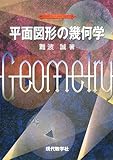アメリカ生まれの幾何学者 Roger Arthur Johnson(1890-1954) が1916年に発表した論文 "A Circle Theorem" の中で示された”Johnson の定理”という定理があります.この定理の内容は,
「3つの等しい円がある一点 で交わるとき,3つの円から選んだ2つの円の
以外の交点をそれぞれ
とする.このとき,3点
は3つの円と等しい円の円周上にある.」
というものです.図で表すと下のようになります.

定理の内容自体は簡潔ですが,言われてみないと気づかない感じがします. ここでは,三角形の外接円の半径に着目した証明をします.
証明:まず,3つの円の中心をそれぞれ とします.そして,
を中心とする円の円周上に点
,
を中心とする円の円周上に点
,
を中心とする円の円周上に点
をそれぞれとります.そして,
を
,
を
,
を
とします.

ここで,3つの円の半径の長さをいずれも とします.三角形
に余弦定理を用いると,
ここで,円周角の定理より,
であるから,
また,上の式は2倍角の公式を用いると,次のように表せます.
同様に,三角形 ,三角形
にも余弦定理を用いると,
ここで,三角形の3辺の長さから外接円の半径を求める公式(証明はこちら,記事の最後に出てくる式です.三角形の3辺の長さから外接円の半径を求める公式 - 頭の整理)を三角形 に用いると,
から,
ここで,分母の丸括弧の中身は,次式が成り立つとき, に等しくなります.(証明はこちら,記事の最後から3番目の式です.三角形の内角のみを用いた余弦定理の表示 - 頭の整理)
を中心とする円に内接する四角形
に着目すると,円に内接する四角形の内角は,それに向かい合う角の外角に等しいから,
同様に,四角形 ,四角形
にそれぞれ着目すると,
また,明らかに,
であるから,
になり, は成り立ちます.
よって, は,
になります. は三角形
の外接円の半径,すなわち3点
を通る円が3つの円と等しいことを示しており,これはJohnson の定理が成り立つことを意味しています.
